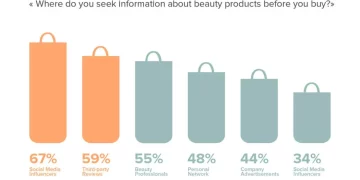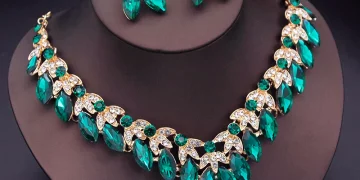Abstract
The rise of e-commerce has revolutionized numerous industries, and the jewelry sector is no exception. Online platforms offering a wide range of jewelry products—from everyday wear to luxury pieces—have significantly impacted consumer purchasing behavior, challenging traditional retail models. This article explores how jewelry e-commerce platforms are reshaping the traditional jewelry retail landscape, analyzing trends in consumer behavior, technological innovations, and the strategic responses of brick-and-mortar jewelers. By examining the benefits, challenges, and future implications of e-commerce in the jewelry industry, this paper aims to understand how digital transformation is influencing the evolution of traditional retail strategies.
1. Introduction
1.1 Background
Historically, the jewelry industry has been built upon face-to-face interactions, where the tactile experience of touching and trying on pieces, along with personal service, played a crucial role in the purchasing process. However, with the rise of e-commerce, particularly post-2010, this model has been disrupted. Jewelry e-commerce platforms, ranging from established luxury brands with online presences to new direct-to-consumer (DTC) startups, are increasingly challenging the traditional brick-and-mortar retail structure.
This article will investigate how e-commerce platforms are reshaping consumer expectations, jewelry marketing strategies, supply chain models, and overall industry dynamics, and assess whether these platforms can completely replace or merely complement traditional retail formats.
2. Traditional Retail in the Jewelry Industry
2.1 The Historical Retail Model
For much of the 20th century, jewelry retail was dominated by physical stores, where customers would visit showrooms, try on pieces, and interact with sales associates. High-end jewelry was largely exclusive, and its consumption was often tied to significant life events such as engagements, anniversaries, and milestones. Consumer trust was built through personal interactions, expertise, and a physical experience that added to the emotional value of the purchase.
2.2 Key Features of Traditional Jewelry Retail
- Personalized Service: In-store experts or jewelers would provide tailored advice, ensuring that each customer felt special and well-informed about the quality and history of the piece.
- Tactile Experience: Consumers were able to touch, feel, and try on jewelry pieces, which helped in making purchasing decisions.
- Brand Heritage and Exclusivity: Luxury jewelers heavily relied on their brand’s heritage and exclusivity, building trust over time through physical retail locations.
- High Overhead Costs: The costs of maintaining physical storefronts, inventory management, and staff were significant, often resulting in higher prices for consumers.
3. The Rise of Jewelry E-commerce
3.1 The Growth of E-commerce in the Jewelry Sector
Over the past decade, the jewelry industry has witnessed a major shift toward online platforms. The global luxury jewelry market is projected to grow significantly, with e-commerce becoming a key driver. Several factors contribute to this rise:
- Consumer Preferences for Convenience: As consumers become more comfortable with online shopping, the desire for convenience, 24/7 availability, and direct-to-consumer access increases.
- Tech-Savvy Millennial and Gen Z Consumers: Younger generations are more inclined to shop online and are less attached to traditional brick-and-mortar retail formats.
- Improved Online Shopping Experience: Advances in augmented reality (AR) and virtual try-ons, better return policies, and personalized online customer service have made jewelry shopping online more accessible and reliable.
- Social Media Influence: Platforms like Instagram and Pinterest have become essential marketing tools for jewelry brands, driving awareness and enabling direct purchasing through links to e-commerce platforms.
3.2 Key Players in Jewelry E-commerce
The jewelry e-commerce landscape is dominated by a combination of direct-to-consumer brands and online retail giants. Key players include:
- Blue Nile: One of the most prominent online jewelry retailers, Blue Nile has built a strong presence by offering competitive pricing and a wide selection of diamond engagement rings and fine jewelry.
- Pandora: Although a traditional retailer, Pandora has successfully transitioned to e-commerce with an emphasis on personalization and customization.
- Shinola, Mejuri, and Gorjana: These newer, more affordable jewelry brands have capitalized on e-commerce to appeal to millennials and Gen Z consumers, focusing on style, sustainability, and direct-to-consumer relationships.
- Luxury E-commerce Platforms: Websites such as Net-a-Porter, Farfetch, and SSENSE have partnered with luxury jewelry brands, making high-end pieces available to a global online audience.
4. How Jewelry E-commerce is Reshaping Traditional Retail Models
4.1 Consumer Behavior Shifts
E-commerce has fundamentally altered consumer behavior in the jewelry sector. Some of the key changes include:
- Price Transparency: Online platforms often provide price transparency and comparisons, which can make consumers more price-sensitive and aware of the options available to them.
- Increased Convenience: Consumers can now browse, compare, and purchase jewelry from the comfort of their homes, removing the barriers of time and location that once restricted traditional retail shopping.
- Personalization and Customization: Many e-commerce platforms offer easy-to-use tools for customizations, such as engraving or selecting the perfect diamond, which were once only available in-store.
- Peer Reviews and Social Proof: Online reviews and user-generated content play a significant role in influencing purchasing decisions, especially among younger consumers who value community feedback.
4.2 Challenges for Traditional Jewelry Retailers
Traditional jewelers face significant challenges from the rise of e-commerce:
- Foot Traffic Decline: With the increasing popularity of online shopping, many brick-and-mortar jewelry stores are experiencing reduced foot traffic, especially in high-rent retail districts.
- Increased Price Competition: Online retailers often have lower operating costs and can offer more competitive prices, putting pressure on traditional retailers who maintain high overheads.
- Changing Consumer Expectations: The expectation for free returns, fast shipping, and 24/7 customer service is now commonplace, challenging traditional retailers who may not be equipped to handle such demands.
4.3 Response of Traditional Jewelers
In response to the rise of e-commerce, many traditional jewelers have adopted a hybrid model, blending physical stores with online sales channels:
- Omnichannel Strategy: Brands like Tiffany & Co. and Cartier have launched online platforms to complement their brick-and-mortar stores, allowing customers to shop both in-store and online with the same seamless experience.
- Digital Transformation: Traditional jewelers are investing in technology to improve the online shopping experience, integrating virtual try-on tools, live chat support, and high-definition product imagery.
- Pop-Up Shops and Experiential Retail: Some luxury jewelers are opening temporary or smaller retail locations to offer unique experiences, creating personal connections with customers while also providing online access.

5. Technological Innovations Shaping Jewelry E-commerce
5.1 Virtual Try-Ons and Augmented Reality (AR)
One of the most significant innovations in jewelry e-commerce is the use of AR and virtual try-on technologies. These tools allow customers to virtually try on rings, necklaces, and earrings through their smartphones or desktops, overcoming the tactile barrier of online shopping.
- Personalized Shopping: AR allows consumers to see how jewelry pieces look on their own photos, ensuring that they make more informed decisions and feel confident about their purchases.
- Enhanced Customer Engagement: Brands can enhance customer interaction with virtual showrooms, product visualizations, and real-time consultations with sales experts, bridging the gap between physical and online shopping.
5.2 Artificial Intelligence and Big Data
E-commerce platforms are leveraging AI and big data to offer personalized recommendations based on consumers’ browsing and purchasing histories. AI-driven chatbots and virtual assistants are improving customer service, offering advice and answering questions in real-time, just as a sales associate would in-store.
6. The Future of Jewelry Retail: E-commerce and Traditional Retail Convergence
6.1 Hybrid Retail Models
The future of jewelry retail is likely to see a continued convergence of e-commerce and traditional retail. While some consumers may always prefer the in-store experience for high-end purchases, many will expect a seamless transition between online and physical stores. Traditional jewelers and new e-commerce players will need to collaborate and innovate to meet evolving consumer needs.
6.2 The Rise of Sustainable and Ethical Jewelry
E-commerce platforms are increasingly offering sustainable and ethically sourced jewelry, a trend that aligns with the growing consumer demand for transparency and social responsibility. This trend is reshaping the way consumers view luxury, pushing brands to be more transparent about sourcing and manufacturing processes.
7. Conclusion
7.1 Summary of Findings
The rise of jewelry e-commerce platforms has undeniably reshaped the traditional retail model in the jewelry industry. E-commerce offers unparalleled convenience, competitive pricing, and the ability to personalize jewelry like never before. Traditional jewelers are responding by adopting omnichannel strategies and investing in technology to enhance the shopping experience.
7.2 Implications for the Future of Jewelry Retail
As the jewelry industry continues to evolve, the relationship between e-commerce and traditional retail will likely become increasingly symbiotic. While brick-and-mortar stores will remain important for creating experiential value and maintaining brand heritage, online platforms will continue to drive growth, reach new customer segments, and set the pace for innovation in the jewelry sector.
7.3 Final Thoughts
The future of jewelry retail is hybrid, dynamic, and consumer-driven. Traditional jewelers who embrace e-commerce and the technologies that come with it will likely thrive, while those who resist change may struggle to maintain relevance in an increasingly digital marketplace.
















































